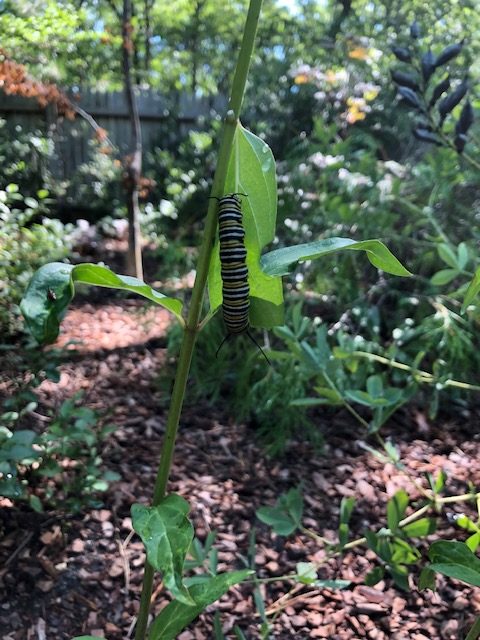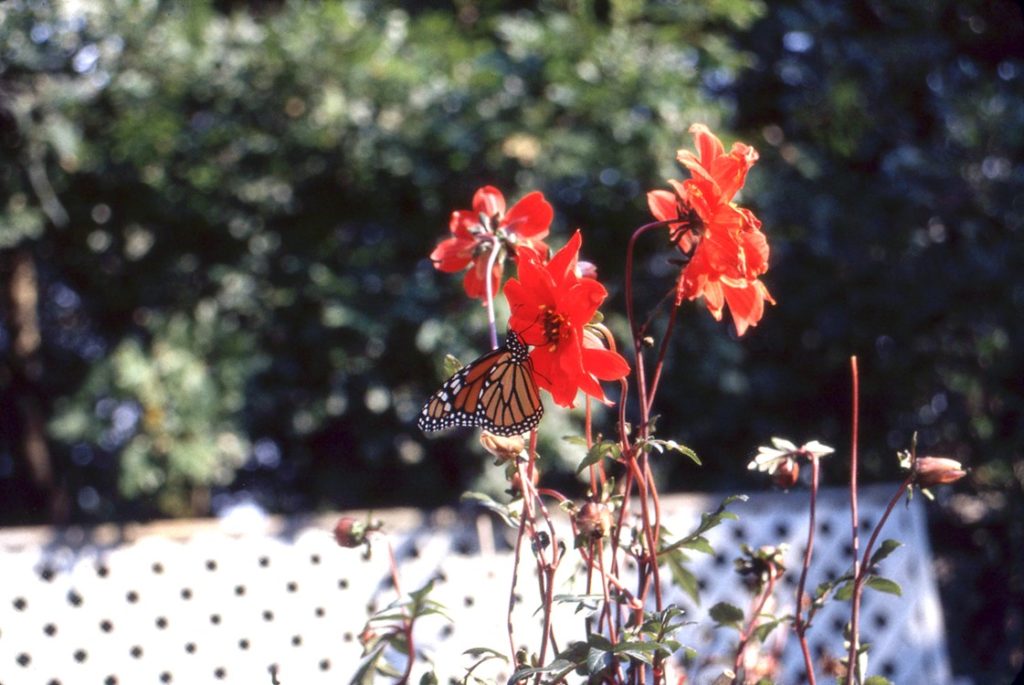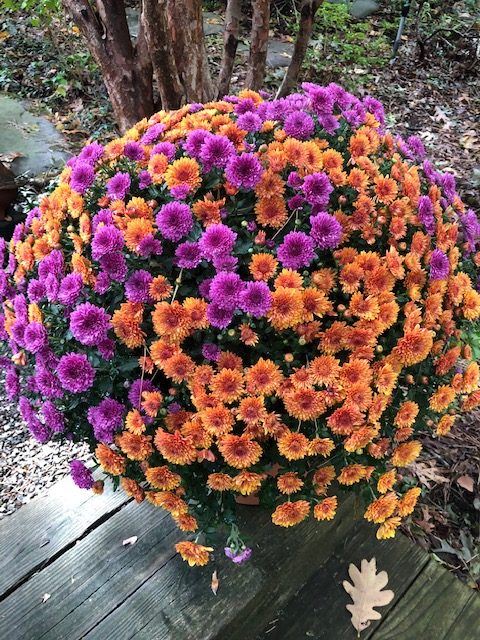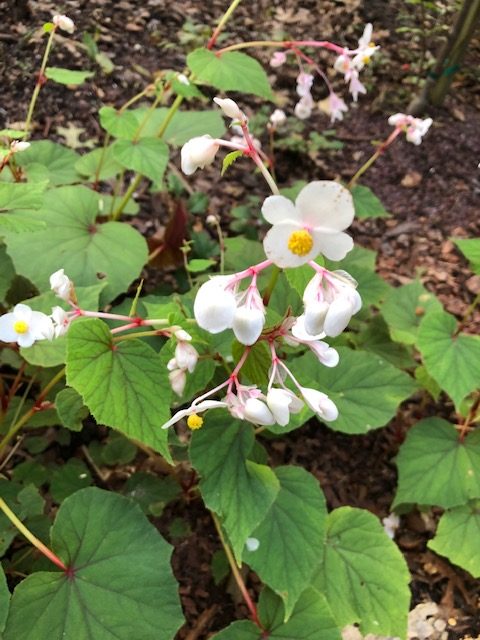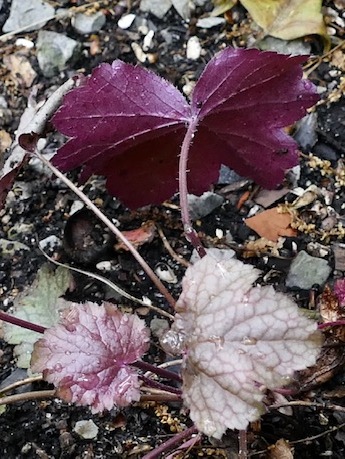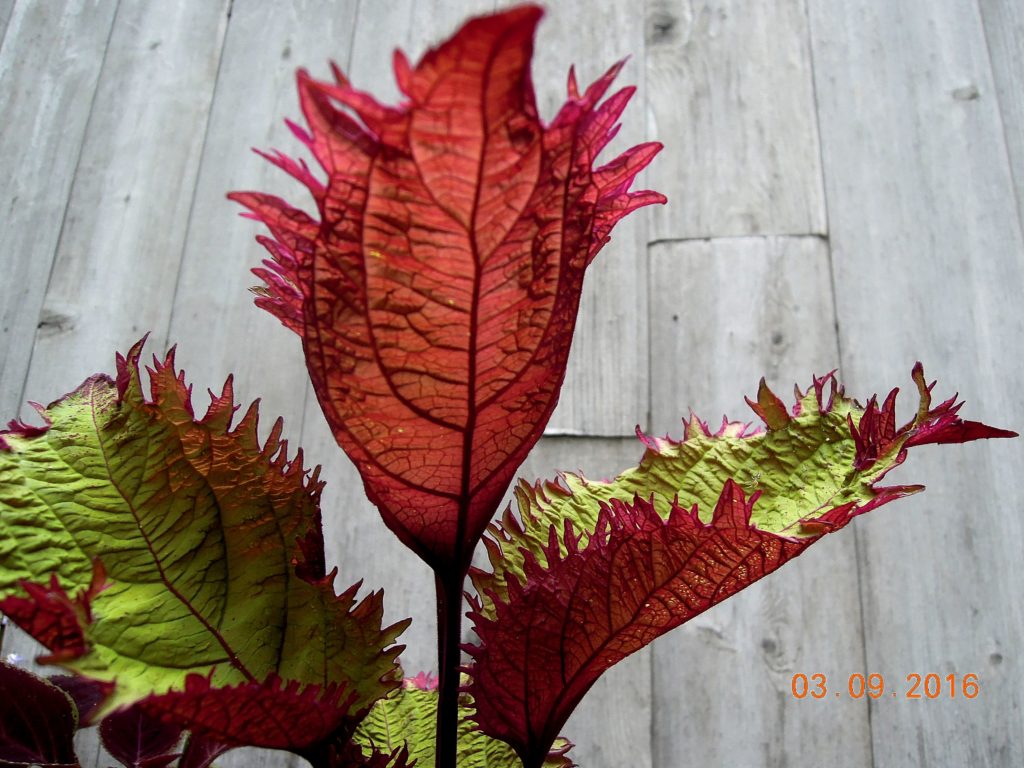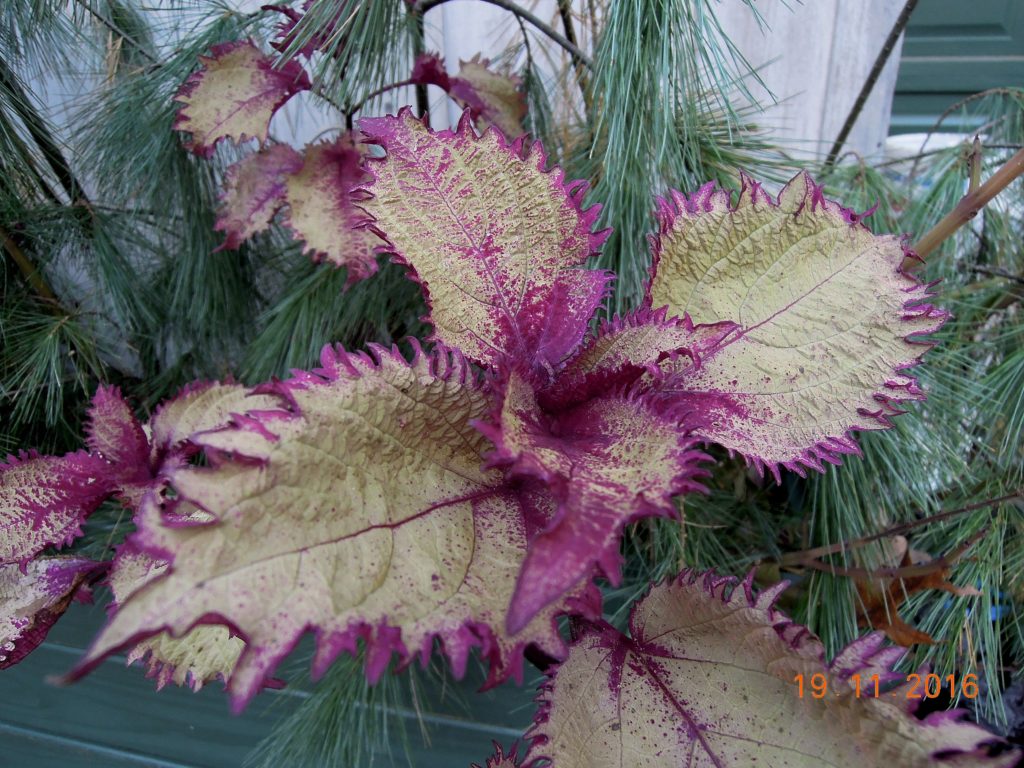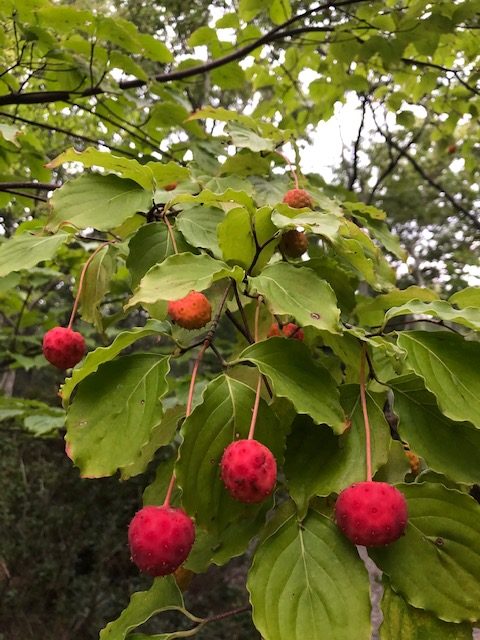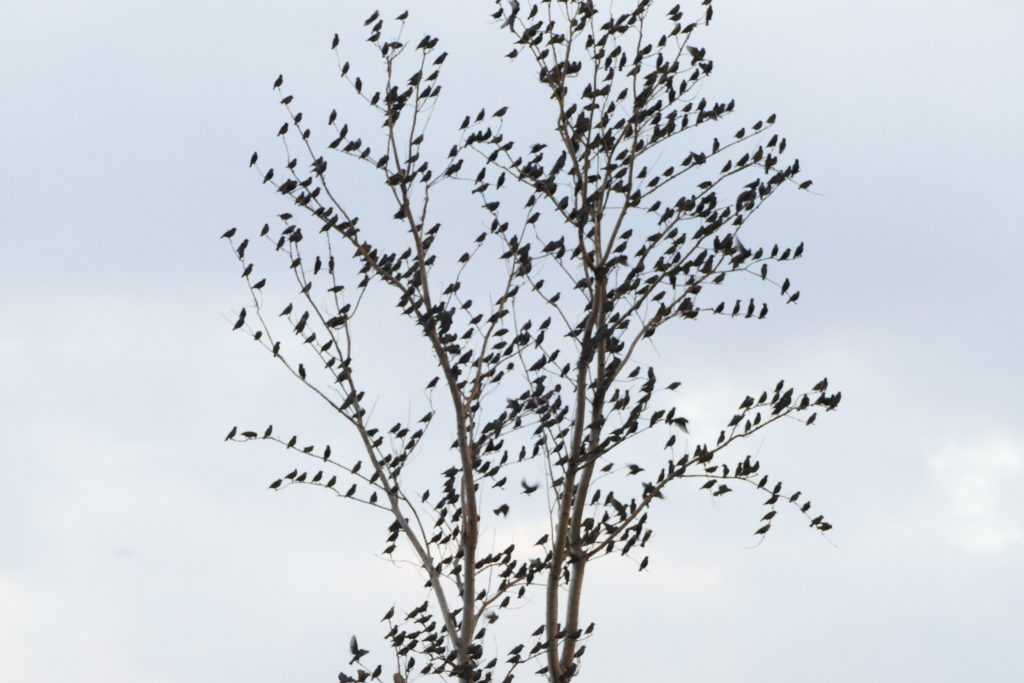Caterpillars are fascinating.
Consider the camouflage trick of the peppered moth caterpillar: To protect itself from bird predators it can change its color to white, green or brown to blend in with the bark color of the trees it feeds on. According to a recent study, these caterpillars can actually sense the color of the tree’s bark with their skin as well as with their eyes.
The monarch butterfly employs a different defense against predatory birds. It has developed a unique immunity to the toxins contained in milkweed plants. Its caterpillars feed only on these plants, store the milkweed toxins in their bodies, and then transfer the protective poison to the adult butterflies. Birds have learned to give monarchs a wide berth. I was delighted to find a gaggle of monarch caterpillars feeding on my recently planted swamp milkweed (Asclepias incarnata). Photo below.
copyright 2019 — Lois Sheinfeld
[Note: For more information about swamp milkweed see post of Feb. 2, “2019: A Choice Selection of Garden Plants.” And when you need an ID, the illustrated field guide Caterpillars of Eastern North America (Princeton University Press 2005) is an excellent reference.]
In Autumn, migrating monarchs and other butterflies visit the fire engine red flowers of my favorite Dahlia ‘Bishop of Llandaff’.’
Along with Dahlias, containers of colorful mums provide eye-popping appeal.
And my Autumn garden is enriched by a group of time-tested shade plants with decorative red and purple foliage undersides:
Begonia grandis ‘Alba’ is a low-growing herbaceous perennial that produces masses of charming snowy-white flowers on pink-flushed stems in September/October. But it was the red undersides of the foliage that captivated garden writer Alan Lacy. “If placed where it catches the last low rays of the sun from behind” he said, “B. grandis offers a sight that is one of the epiphanies of Autumn.” My plants thrive in moist, rich soil. Photos below.
Heuchera ‘Stainless Steel’ is another low-growing, shade-loving perennial. Its showy silvery leaves with an eggplant-purple reverse are beautiful until frost. Yet for me, its greatest asset is its longevity. I’ve been seduced by countless orange-pink and russet-brown heucheras — so-called perennials — that didn’t survive more than one or two seasons. H. ‘Stainless Steel’ has flourished in my organic garden for more than a decade. Hardiness counts. Photo below.
copyright 2019 — Jessica Amsterdam
Henna Coleus. Any celebration of shade plants with vibrantly colored undersides must include award-winning Henna Coleus. As my loyal readers know, I’ve been singing the praises of this dazzling annual for years. Unlike other Coleus that are quick to give up the ghost at summer’s end, Henna would be happy to flaunt her ruffles at your Thanksgiving table. Photos below.
Finally, my Autumn garden has been graced with an ever-increasing number of Cornus kousa dogwood volunteers displaying extraordinary blood-red, over-sized fruit. Photo below.
And I think I know who to thank for that.
